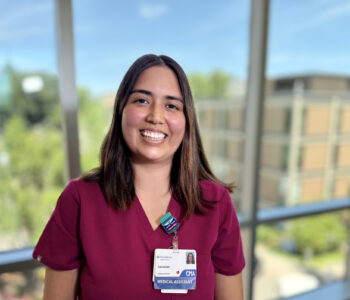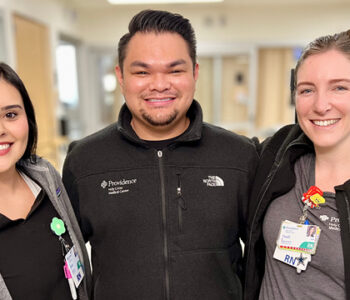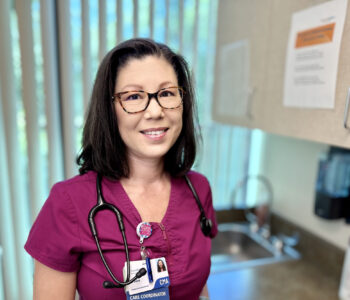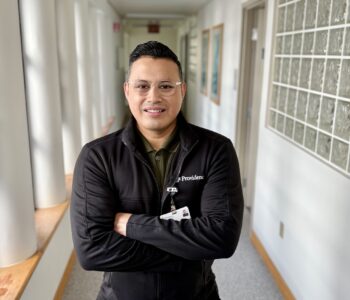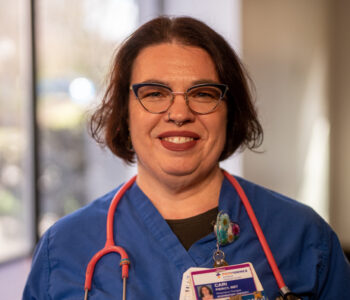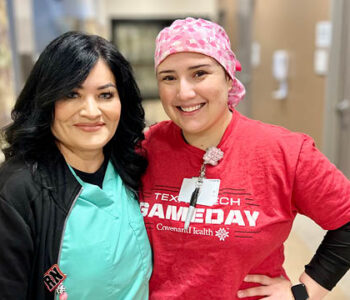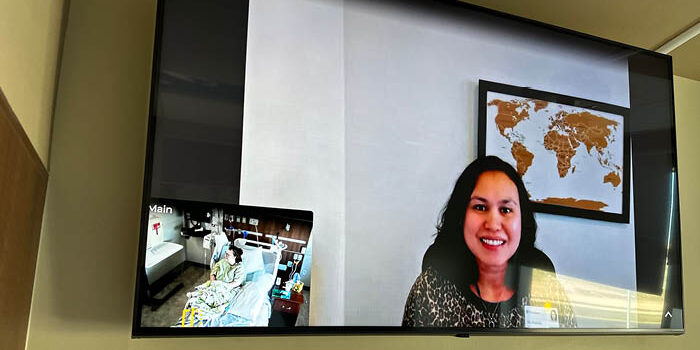 Caregiver Stories
Caregiver Stories
Three ways Providence caregivers benefit from a digital-first health care experience
In this age, consumers expect to engage digitally with organizations across every sector, including health care. At Providence, we prioritize digital engagement, not only to improve the care experience for patients, but also to make work easier for our caregivers, ultimately lengthening their careers, reducing burnout and enhancing caregiver wellbeing. Here are three ways our digital-first healthcare experience makes Providence a great place to work.
Giving nurses flexibility and longevity with an innovative virtual nursing model
Providence is a proud pioneer of Co-Caring, a hybrid nursing care model that allows a virtual nurse to provide patient care, supporting the bedside nurses and care team through a bidirectional audio and video telehealth platform. This approach not only improves patient care quality but also increases caregiver satisfaction, success and retention.
Providence saw great success in our Co-Caring pilot—and we’re rolling it out systemwide. Says Providence Chief Nursing Officer and RN Sylvain Trepanier, “The virtual nurses have proven to be incredible advocates for their patients, creating an improved care experience. We have had overwhelmingly positive patient feedback.”
This new model of care offers many benefits including:
- Reduced workload for bedside nurses: The virtual nurse helps with admission, discharge preparation, MRI and pre-procedural checklists, medication reconciliation and more. They also attend daily interdisciplinary care team meetings with charge nurses, case managers and physicians, so they can most effectively support the in-person care teams.
- Increased caregiver collaboration: Unlike the traditional health care model in which nurses and their support staff work independently, this health care model includes a collaborative team at the bedside. This more efficient approach reduces the demand for bedside nurses and their support teams of certified nursing assistants (CNA), patient care technicians (PCT) and nurse technicians (NT). Co-Caring allows bedside nurses to focus on assessment, medication administration and critical thinking, while assistants focus on other aspects, such as daily living activities.
- Caregiver retention: Co-Caring helps us retain nurses, as well. After Co-Caring was in place for a full year at Covenant Medical Center, part of the Providence family of organizations, first-year turnover staffing rates were down by 73% for registered nurses and 55% for all staff on the unit. For many nurses who may not want or be able to work at the bedside, they can continue their nursing practice virtually with Co-Caring and extend the longevity of their careers.
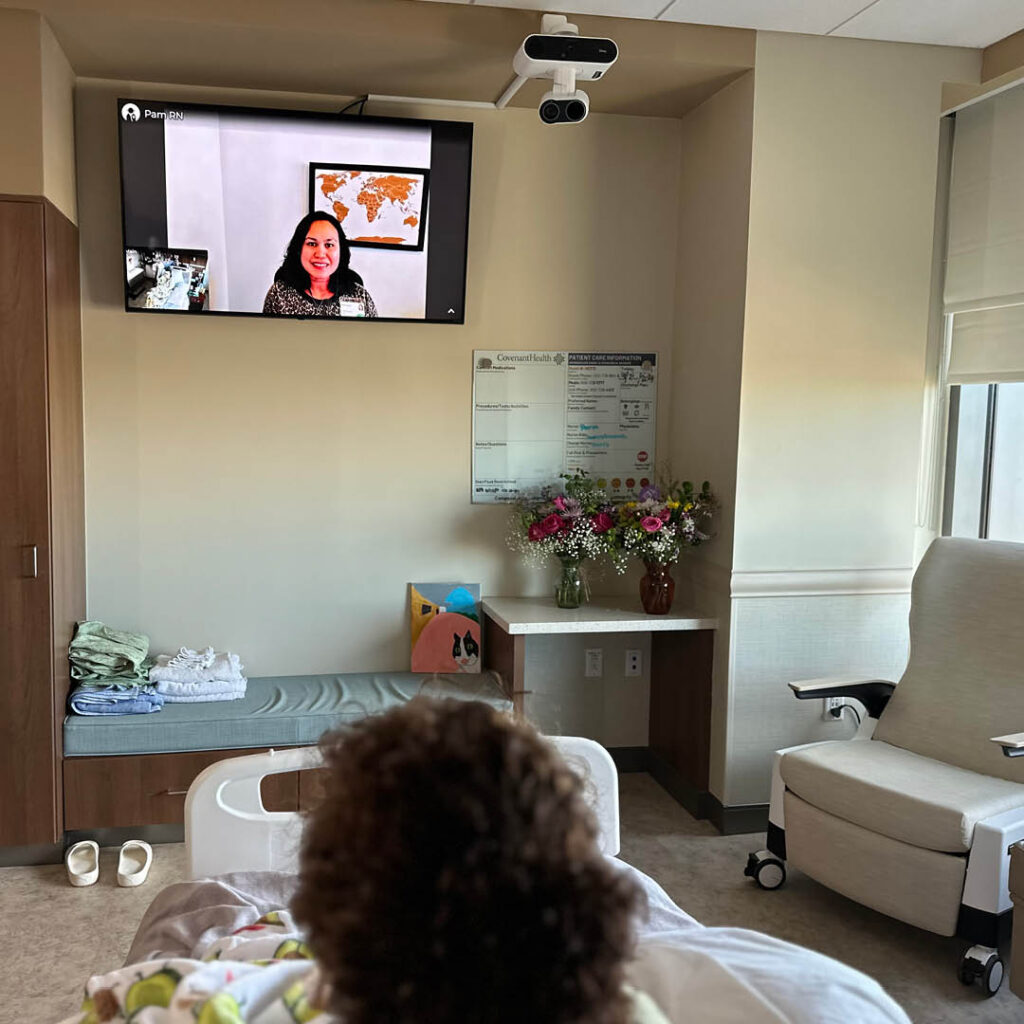
Using AI to make medical assistants’ jobs easier
Electronic messaging is an efficient way for patients to communicate with caregivers and providers, but after the start of the pandemic, message volume increased threefold—and in December of 2022, electronic communications surpassed phone calls as the primary means of communication between patients and providers. This surge overwhelmed medical assistants and other caregivers, so Providence sought innovative solutions to tame this influx.
We developed a new product, ProvARIA, based on Microsoft’s Azure OpenAI Service, which categorizes inbox messages by content and urgency so the right type of caregiver can handle each message. For example, the solution prioritizes responding to an email from a patient experiencing severe or concerning symptoms ahead of a query about clinic hours.
As explained in this Microsoft blog, Providence piloted ProvARIA with four separate clinics. With the help of this new technology, we saw a 35% improvement in response turnaround time. Additional clinics joined in, and with support from ProvARIA, our MAs now process 5,000 messages per day, covering 145 Providence clinics and 650 providers—and they’re doing it with peace of mind that the most time-sensitive messages take precedence.
Battling burnout with artificial intelligence
Staffing schedules are a key factor in work-life balance for caregivers, but they can be a daunting task for managers. To streamline this system and ultimately help caregivers avoid burnout, Providence developed an artificial intelligence (AI) algorithm that focuses on managing caregiver resources at an optimal level.
As featured on HealthExec.com, Senior Manager, Workforce Optimization and Innovation, Natalie Edgeworth says, “The AI looks at electronic medical record and billing data to forecast both volume and acuity to be able to assign people to the right places at the right times. It also provides them options to pick different lengths of shifts, so we are giving the control back to the caregiver.”
Edgeworth adds that “the AI has given caregivers back tens of thousands of hours annually so they can focus on top-of-license activities rather than manually going through schedule creation.”
“Caregivers that have worked in the field the past 10 years usually worked from 7 a.m. to 7 p.m. Well, if you have to pick up your child or if you have to make a doctor’s appointment, this allows you to say, ‘I would only like to work eight hours so you can have that balance with real life.”
Join an organization at the forefront of digital innovation in the healthcare work experience. Explore all open roles.

